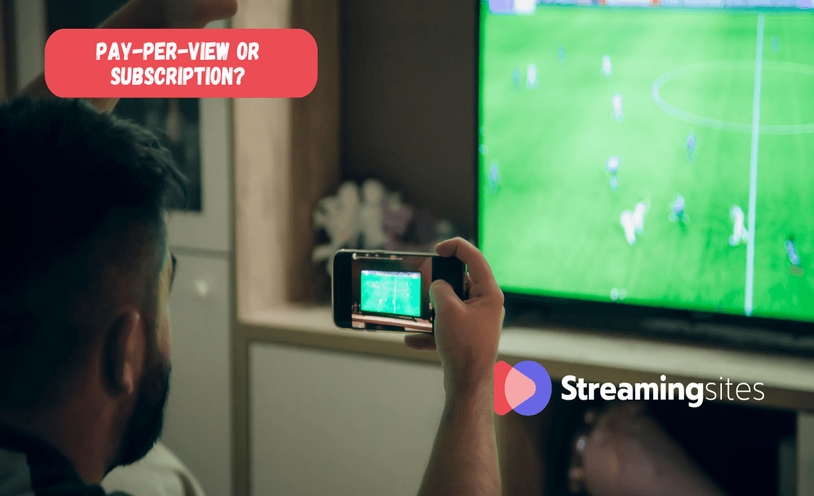
Pay-Per-View or Subscription? The Future of Sports Streaming Models
Remember when watching sports meant tuning in at 7 p.m. sharp, sitting through beer commercials, and yelling at the TV with a bowl of popcorn in hand? Those days are drifting. Now, with a tap, a scroll, a swipe - you're in the game. Or are you?
“Live” doesn’t mean what it used to. Welcome to the war of subscription or pay-per-view, where every game has a price tag, but the scoreboard? That’s still being written.
Cable’s grip is slipping. According to Deloitte's 2024 Digital Media Trends report, more than 60% of U.S. viewers now consume sports content via live streaming platforms. Not cable. Not satellite. Streaming.
Why? Flexibility. Access. Personalization. Oh, and the ability to pause a goal replay for the hundredth time without missing the next whistle.
Services like DAZN, ESPN+, and Amazon Prime Video have jumped into the arena, offering exclusive rights to major sporting events across football, MMA, tennis, basketball, and more. And suddenly, the old model-bundled, bloated, scheduled- is outmuscled.
There’s another problem, too: content availability varies greatly by region. If you’re in Canada, you’ll be able to watch most sporting events online that take place in North America, but what about European or South American events? For that, you’ll need access to VPN servers. Even if you travel abroad, you’ll be able to activate IP Canada to watch the competition. Without a VPN like VeePN, you won’t even be able to watch the tournament from your home region if you’re traveling.
Monthly fee. Unlimited access. That’s the siren song of the subscription model.
For a fixed price (usually somewhere between $5–$20 a month), users unlock a smorgasbord of live events, replays, behind-the-scenes content, and archived games. Netflix for sports. Simple.
But there's a catch. Several.
According to Statista, the average U.S. household now subscribes to 4.5 streaming services. How long before fatigue sets in? Or has it already? To save money, you can simply reduce the number of subscriptions or use Chrome VPN to get the best price for subscriptions that apply to people in other regions. Yes, the price also varies greatly by country.
On the other side? The gladiator model: Pay-Per-View (PPV).
You pay once. You watch it once. No strings. No recurring fees. No unwanted content.
PPV thrives on spectacle. Think Mayweather vs. McGregor in 2017. It generated 4.3 million U.S. buys,
grossing over $600 million. Numbers don’t lie- when the stakes are high, viewers pay up.
But PPV isn’t perfect:
Still, for one-time superfans, it’s a one-night fling, not a long-term commitment. The appeal? Immediate. Clear-cut. No monthly baggage.
Enter the hybrid model, where platforms blend subscription with PPV. ESPN+ does this. You subscribe monthly and still pay extra for big UFC cards. Double dip, double charge. Genius? Greedy? Maybe both.
This layered model speaks to the reality of sports: not all games are equal. A regular-season hockey game isn’t the same as a World Cup final. Should they cost the same?
Hybrid models allow platforms to cater to both casual viewers and hardcore fanatics. But the danger? Confusion. Complexity. Alienation.
The consumer, once again, is left guessing: What do I get, and what’s it going to cost me this time?
Let's not pretend. Piracy isn’t going away. As prices rise and access becomes complicated, illegal streams multiply. One estimate suggests the global sports industry loses over $28 billion annually to piracy.
Too many hoops, and people jump ship.
While platforms debate subscription or pay-per-view, many fans opt for a third option: neither. Illegal but easy. Free but risky.
This is the elephant in the field—ignored at peril.
Here’s the twist: people don’t just pay for content. They pay for convenience, community, and control.
Subscriptions feel like a club. You’re in. You belong. PPV? That’s the thrill of exclusivity. You’re watching this, right now, before anyone else.
It’s emotional. Irrational, sometimes. But very human.
Marketers know this. Platforms exploit it. And fans? Fans pay. Willingly.
Is there a winner? Not yet. Maybe never.
In markets such as India and Southeast Asia, freemium ad-supported models are experiencing significant growth. In the U.S., bundled subscription packages (hello, Disney+, Hulu, ESPN) are on the rise. Europe’s experimenting with microtransactions—paying $0.99 to watch the last 10 minutes of a match.
Expect:
But most importantly, choice will be everything.
Sports streaming isn’t about watching. It’s about deciding how you want to watch. When. Where. And how much you’re willing to give up—for joy, for glory, or for that last-second buzzer-beater.
In one corner: subscription. Steady, predictable, familiar. In the other: pay-per-view. Flashy, risky, unforgettable. And standing in between? You. The fan. The player who ultimately decides who wins.
Ready to click?